Chinese Herbs
Herbal chemistry refers to the subject combines modern scientific theories and methods for studying the chemical composition of herbs. The research object of herbal chemistry is the chemical composition of herbs. Herb has a very complicate chemical composition, usually containing sugars, amino acids, proteins, fats, waxes , enzymes, pigments, vitamins, organic acids, tannins, inorganic salts, essential oils, alkaloids, glycosides and so on. Each herb may contain a variety of ingredients. In these ingredients, there are some types with obvious biological activity and can play a role in health care, often referred to as the active ingredient, such as alkaloids, glycosides, volatile oils, amino acids and so on.
The reason why herbs have medical effects is mainly due to the active ingredients contained in them. In addition to the many kinds of herbal active ingredient that have already been studied and widely applied in the past, such as anti-inflammatory and antimicrobial berberine, the ephedrine contained ephedra for asthma treatment, the anti-hypertension ingredient, reserpine contained in Rauvolfia verticillata, in recent years, it has been found of many more active ingredients contained in Chinese herb from both domestic and abroad. It has been particularly studied of the biological active ingredients in the field of anti-tumor, the treatment of cardiovascular disease and chronic bronchitis. Other ingredients are universally presented in the herbal kingdom, but usually have no biological activity without any pharmaceutical effect, thereby being known as "ineffective ingredients", such as carbohydrates, proteins, pigments, resins, and inorganic salts. However, the definition of “effective” and “ineffective” is not absolute, and some components originally considered as invalid have also become active ingredients later due to the presence of the biological activity contained in it. For example, the polysaccharide contained in mushrooms and poria cocos has certain anti-tumor effect; seaweed polysaccharide has lipid-lowering effect; the radices trichosanthis protein has a labor induction effect; tannin is widely presented in the herbal kingdom. Although it generally has no major effect on the treatment of diseases, thereby often being considered as a kind of inactive ingredient, the tannin contained in gall, Polygonum cuspidatum and sanguisorba officinalis, because of the high content and certain biological activity, is treated as a kind of active ingredient; another example is that the mucus is usually considered as ineffective ingredient, and is treated as an active ingredient in rhizome beltillae.
Owing to the development of modern science, the separation methods of all kinds of sophisticated quantitative methods tend to be fast, enabling the further deepened analysis on the chemical composition of herbs. In particular, people has combined gas chromatography and mass spectrometry, linking the separation, purification and identification, several steps together, improving the speed and accuracy of structure determination, further opening broad prospects for the study of the chemical composition of herbs, in the 1950s, due to the discovery in folk medicine of blood pressure-lowering component, Rauwolfia alkaloids reserpine, and the discovery of the anticancer component, vincaleukoblastinum from Catharanthus roseus, there is a renewed emphasis on the study of the ingredients contained in folk herbal plant in the international scientific community. It is especially worth mentioning that many countries around the world are now competing on screening active anti-cancer ingredient from the plant drugs. In China, in recent years, it has been found from herbs Artemisia annua of artemisinin, being a fast-acting anti-malarial drug; the agrimophol identified from the bud and roots of Agrimonia pilosa has excellent tenia-expelling effect; the farrerol identified from Rhododendron and other studies on the components of ginseng and acanthopanax have all clarified that herbal chemistry has made substantial progress.
It can be expected that in the field of a number of drugs for the treatment of major disease, will soon obtain some new breakthroughs from plant ingredients. In the foundation of achieving a major success in the research of herbal and plant effective component, people has developed a new subject of plant tissue culture, which is a new area of research engaged in studying the production of secondary metabolites from plant tissue after artificial culture process, which aims to directionally produce a lot of active ingredients in favor of the industrial production. For example, the crude soap content in the ginseng tissue culture can be up to 21%. Meanwhile, it is promising that tissue culture can develop into an effective method of analyzing the biosynthetic pathway of plant components. The proposed chemical plant taxonomy in the recent nearly three decades is exactly the development of the chemical constituents of plants, namely hoping to develop a truly natural classification system from the distribution principle of metabolites in plants (chemical composition). It will promote the study of the kinship of plants from the angle of the chemical constituents.
- Structure:

- Chemical Name:CAPSAICIN, SYNTHETIC ANALOG
- CAS:
- MF:C18H27NO3
- Chemical Name:Turmeric P.E
- CAS:
- MF:
- Chemical Name:Capsanthin
- CAS:
- MF:C40H56O3
- Chemical Name:QINGDANONE
- CAS:
- MF:
- Chemical Name:FenugreekP.E
- CAS:
- MF:
- Chemical Name:Corydalis Root
- CAS:
- MF:
- Structure:
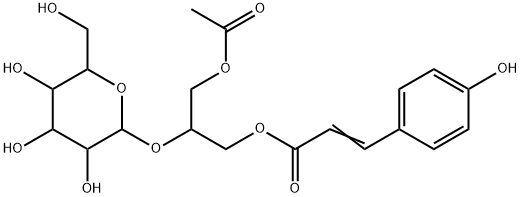
- Chemical Name:BRUSATOL
- CAS:114420-67-6
- MF:C20H26O11
- Chemical Name:CORN SILK P.E.
- CAS:
- MF:
- Chemical Name:HOMOERIODICTYOL(SH)
- CAS:
- MF:
- Chemical Name:LECANORIC ACID(SH)
- CAS:
- MF:
- Structure:
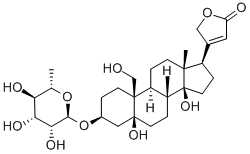
- Chemical Name:Convallatoxol
- CAS:3253-62-1
- MF:C29H44O10
- Structure:
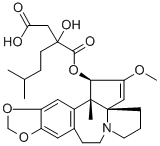
- Chemical Name:Deoxyharringtonine
- CAS:36804-95-2
- MF:C28H37NO8
- Structure:
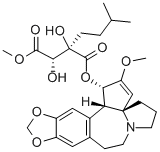
- Chemical Name:Isoharringtonine
- CAS:26833-86-3
- MF:C28H37NO9
- Chemical Name:Linariifolioside
- CAS:
- MF:
- Structure:
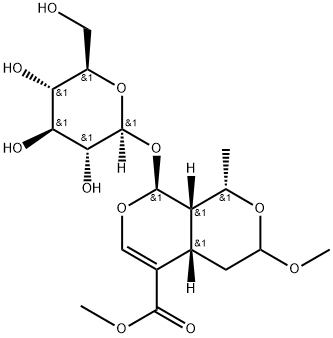
- Chemical Name:7-O-Methylmorroniside
- CAS:41679-97-4
- MF:C18H28O11
- Chemical Name:Burdok root P.E
- CAS:
- MF:
- Structure:
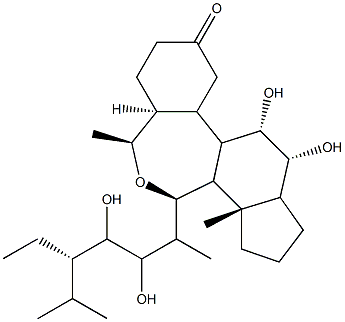
- Chemical Name:Homobrassinolide
- CAS:74174-44-0
- MF:C29H50O6
- Structure:
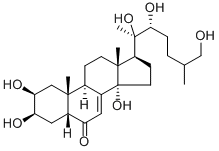
- Chemical Name:inokosterone
- CAS:15130-85-5
- MF:C27H44O7
- Structure:

- Chemical Name:8-EPILOGANIC ACID
- CAS:82509-41-9
- MF:C16H24O10
- Chemical Name:QINGHAOSU I
- CAS:
- MF:
- Chemical Name:SANTALUM ALBUM SEED EXTRACT
- CAS:
- MF:
- Chemical Name:White Mulberry Root-bark Extract
- CAS:
- MF:
- Chemical Name:GaMbir Plant Extract
- CAS:
- MF: